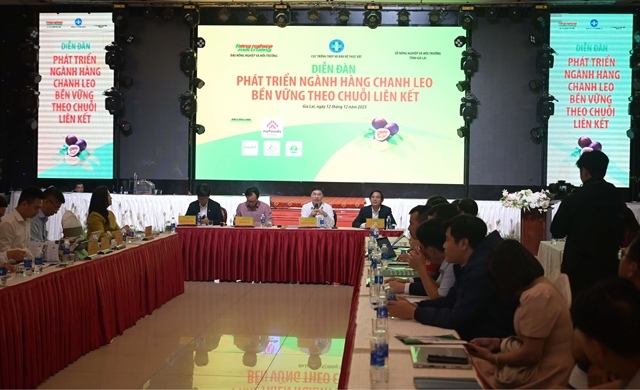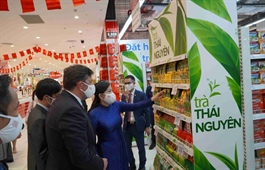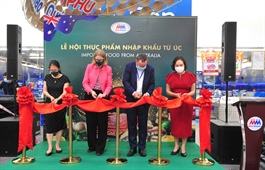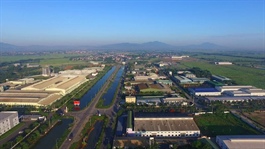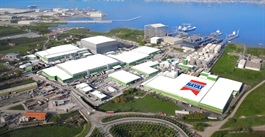Viet Nam to focus on small agricultural processing businesses
Viet Nam to focus on small agricultural processing businesses
Viet Nam aims to be in the top 10 deep processing centres of the world by 2030. However, experts say if the Government’s solutions and policies are not implemented synchronously, this goal will be challenging.

According to the Department of Agricultural Product Processing and Market Development from the Ministry of Agriculture and Rural Development (MARD), there are currently 7,500 industrial-scale agro-forestry-fishery processing enterprises associated with exports and thousands of establishments of household processing nationwide.
It is estimated that each year Viet Nam is capable of processing, preliminarily processing and preserving about 120 million tonnes of agricultural, forestry and aquatic products. Of which, over 95 per cent is done in small and medium-sized processing establishments.
Although Viet Nam’s agricultural product processing industry has made remarkable progress, the value-added growth rate is about 5-7 per cent per year, and processing technology is the weakest link in the value chain of agricultural products, said the department.
A representative of an avocado processing business in Lam Dong said his establishment did not have access to the right technology to process high-quality products from avocados. He said he had invested in machinery for processing essential oils from the fruits, but the quality was not as expected. The extracted oil turned bad after only 2-3 weeks.
Each year, Viet Nam can export 120 million tonnes of vegetables and 12 million tonnes of fruit, mainly fresh produce.
Processed products accounted for only 8-10 per cent, or less than 10 million tonnes per year, while by-products such as fruit peel are still open.
Pham Minh Son, director of New Greenway Company in Hai Duong Province, told local media: “Fresh agricultural products and vegetables in Viet Nam have a short preservation time of only three to five days, while other countries can preserve them between five and ten days.”
Son said some Chinese lettuce can be kept for 15 days and still look as fresh as if it was just picked in the garden.
Pham Anh Tuan, director of the Institute of Agricultural Electrical Engineering and Post-Harvest Technology, said their value would be high if agricultural products could be preliminarily processed and frozen.
For example, honey in Japan has a very high price because they invest a lot in preliminary processing with modern technology, while Vietnamese honey sometimes was sold less than a litre of fruit juice because it was processed by rudimentary machinery.
Tuan said only about 150 large enterprises invested methodically in processing, such as DongGiao and Lavifood, whose technology is more integrated with the world standard, follow the global market.
Tuan added the majority of the enterprises, known as small businesses, were not interested as they were lack of capital.
Except for capital, the investment mechanisms and policies for the post-harvest stage have not yet been paid attention to, causing most agricultural products to be marketed in fresh and raw form, said, experts.
Nguyen Quoc Toan, director of the Department of Agricultural Product Processing and Market Development, said that the national science and technology innovation program only focused on large enterprises, while small and medium-sized processing establishments with disadvantages in the capital, science and technology, experience in the industry have not been taken into account.
Toan said according to a Government Resolution in July 2019 on solutions to encourage and promote enterprises to invest in agriculture, by 2030, there will be 80,000 to 100,000 enterprises having business investment the sector, including about 3,000 to 4,000 large-scale enterprises and 6,000 to 8,000 small and medium-sized processing establishments.
Pham Anh Tuan said while the global agricultural product preservation industry focused on safe preparations, biological products, and environmentally friendly chemicals, safe handling technologies and smart packaging, the chains of preservation and processing of agricultural products in Viet Nam were broken at the stage of raw material as the logistics system was still poor.
Experts have said processing is a field with great potential and expect Viet Nam to be in the world’s top 10 deep processing centres.
“The most important factor that the processing industry needs to aim for is effective, stable quality and building a prestigious brand name even if it is a small-scale operation, “Tuan said.
According to experts, to make local agriculture become a commodity production industry, the processing industry and the preservation industry must be the keys to improving export value and reducing the pressure on immediate consumption.
Tuan said it was necessary to develop general support policies for enterprises to innovate technology on concentrated processing zones, especially for small and medium-sized enterprises and even micro-enterprises in the industry.
The agricultural sector needs to build an ecosystem of processing industry and post-harvest preservation of farm products with coordinating agencies, enterprises, and human resource training.






